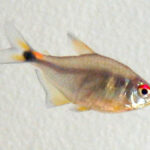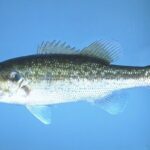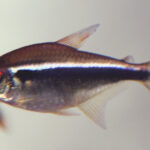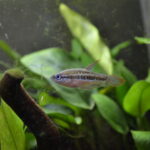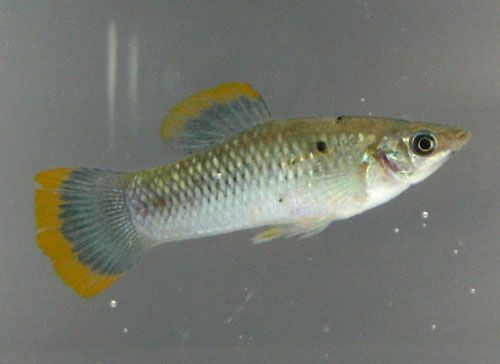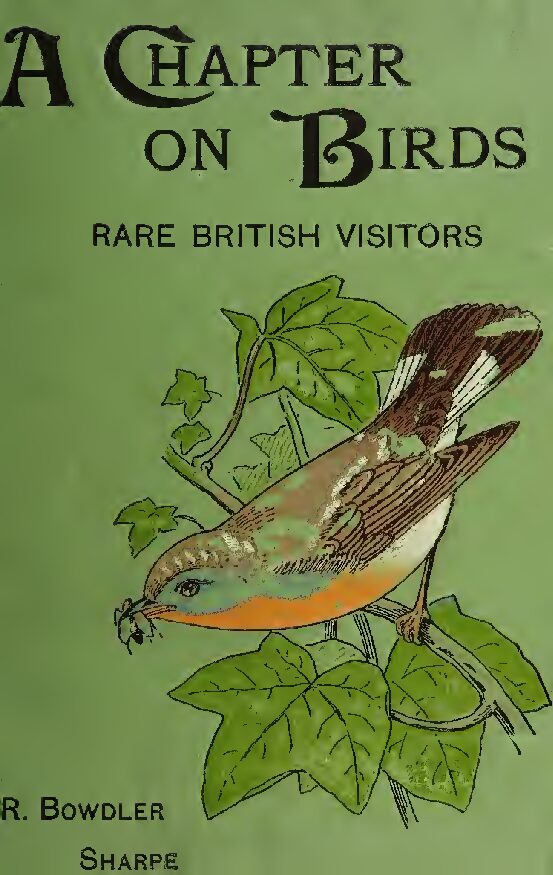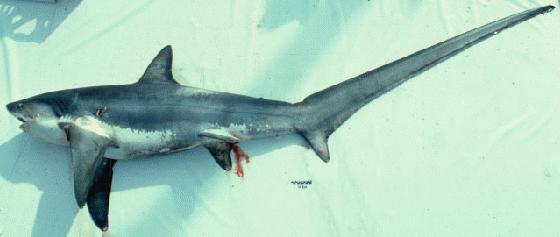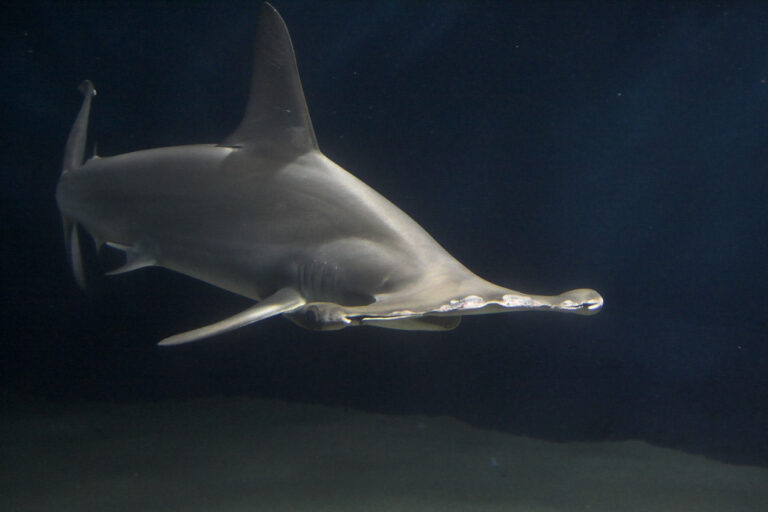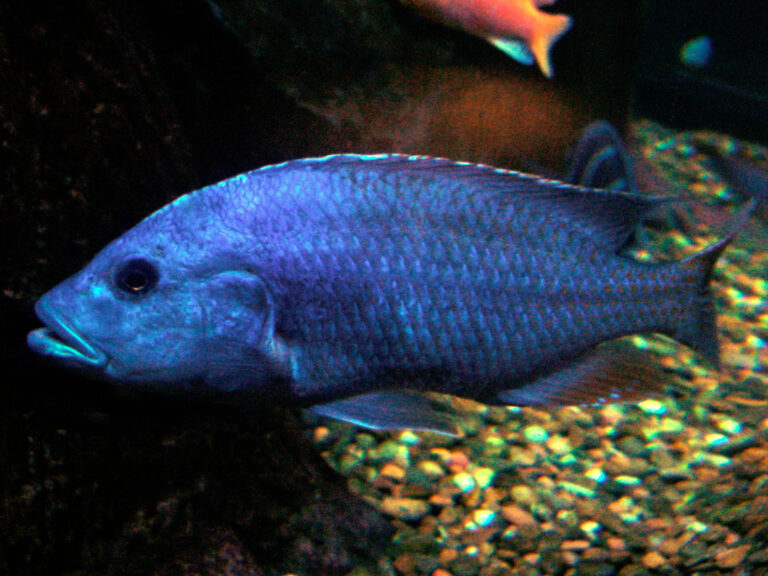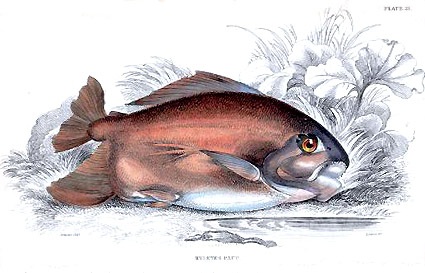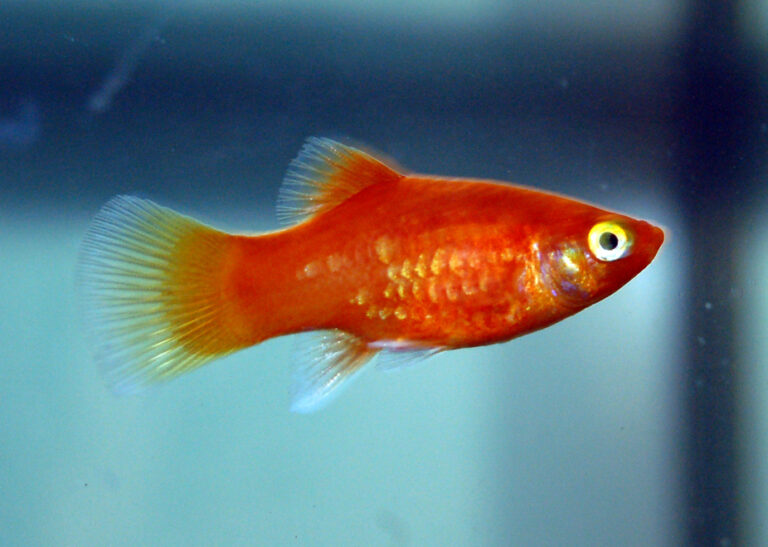Tadpole Madtom
By Ryan Maron | Last Modified: July 7, 2025
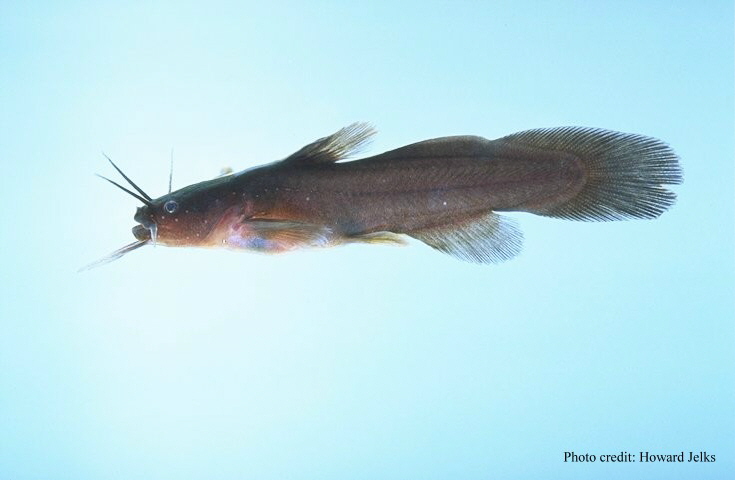
The Tadpole Madtom (Noturus gyrinus) represents one of North America’s smallest and most elusive catfish species, playing a crucial ecological role as both predator and prey in freshwater ecosystems. This diminutive member of the Ictaluridae family inhabits shallow, rocky streams and rivers throughout much of eastern North America, where it serves as an important indicator species for aquatic ecosystem health. Despite its small stature, the Tadpole Madtom demonstrates remarkable adaptations that allow it to thrive in fast-flowing waters, utilizing specialized feeding behaviors and defensive mechanisms that make it a fascinating subject for both ichthyologists and conservation biologists.
The species contributes significantly to benthic food webs, controlling invertebrate populations while providing essential forage for larger predatory fish, amphibians, and aquatic birds. Its presence often indicates high water quality and stable substrate conditions, making the Tadpole Madtom a valuable bioindicator for environmental monitoring programs across its range.
| Feature | Details |
|---|---|
| Common Name | Tadpole Madtom |
| Scientific Name | Noturus gyrinus |
| Family | Ictaluridae |
| Typical Size | 6-10 cm (2.4-3.9 in), 5-15 grams |
| Habitat | Rocky streams and shallow rivers |
| Diet | Benthic invertebrates and small fish |
| Distribution | Eastern and central North America |
| Conservation Status | Least Concern |
Taxonomy & Classification
The Tadpole Madtom belongs to the order Siluriformes, which encompasses all catfish species worldwide. Within this order, it is classified under the family Ictaluridae, commonly known as North American freshwater catfish. The genus Noturus comprises approximately 29 recognized species of madtoms, characterized by their small size, venomous pectoral fin spines, and specialized habitat requirements.
Noturus gyrinus was first scientifically described by Mitchill in 1817, with the specific epithet “gyrinus” referring to its tadpole-like swimming motion. The species exhibits considerable morphological variation across its range, leading to ongoing taxonomic discussions regarding potential subspecies recognition. Recent molecular phylogenetic studies have confirmed its placement within the Noturus miurus species complex, sharing close evolutionary relationships with the Brindled Madtom and Frecklebelly Madtom.
The Tadpole Madtom’s taxonomic history includes several synonymous names, including Noturus exilis and Schilbeodes gyrinus, reflecting historical classification schemes within the catfish family. Modern genetic analysis has validated its distinct species status while revealing cryptic diversity within what was previously considered a single widespread species.
Physical Description
The Tadpole Madtom exhibits the characteristic compressed, streamlined body plan typical of rheophilic catfish species. Adults typically reach lengths of 6 to 10 centimeters, with exceptional specimens occasionally exceeding 12 centimeters. The species displays sexual dimorphism, with mature males developing more pronounced pectoral fin spines and a slightly more robust head profile during breeding season.
The body coloration ranges from pale yellowish-brown to dark olive-brown, featuring irregular dark blotches and mottling that provide excellent camouflage against rocky substrates. The ventral surface appears lighter, typically cream to pale yellow. A distinctive dark saddle-like marking often extends across the dorsal surface just anterior to the dorsal fin, though this feature varies considerably among populations.
The head is notably flattened dorsoventrally, with small eyes positioned high on the skull, an adaptation for bottom-dwelling behavior. Four pairs of barbels surround the mouth, with the maxillary barbels extending to approximately the posterior edge of the operculum in adults. The adipose fin connects to the caudal fin via a low membrane, distinguishing it from many related madtom species where these fins remain separate.
The pectoral fin spines contain venom glands capable of delivering a painful sting, serving as the species’ primary defense mechanism against predators. These spines feature serrated posterior edges and can lock in an extended position when the fish is threatened.
Habitat & Distribution
The Tadpole Madtom inhabits a diverse range of freshwater environments across eastern and central North America, from the Great Lakes region south to the Gulf Coast states. The species demonstrates remarkable adaptability, occupying both swift-flowing rocky streams and slower-moving rivers with sandy or gravelly substrates. Optimal habitat conditions include water temperatures between 15-25°C, dissolved oxygen levels exceeding 6 mg/L, and moderate to high flow velocities that maintain clean substrates.
Primary habitat requirements include the presence of suitable cover structures such as flat rocks, submerged logs, or undercut banks. The species shows strong preference for riffle and run sections of streams, particularly areas where current breaks occur around boulders or other obstacles. Water depth preferences range from 0.3 to 2 meters, with juveniles often found in shallower marginal areas.
The geographic distribution extends from southern Canada through the Mississippi River drainage system, encompassing portions of the Great Lakes, Ohio River, and Missouri River basins. Isolated populations occur in Atlantic coastal drainages from New York to South Carolina. Recent surveys have documented range contractions in heavily urbanized watersheds, particularly in the upper Midwest where habitat degradation has fragmented historical populations.
Seasonal habitat use patterns reveal movements between deeper pools during winter months and shallow riffle areas during spring and summer. The species demonstrates high site fidelity, with individual fish often remaining within a 50-meter home range throughout their adult lives.
Diet & Feeding Behavior
The Tadpole Madtom employs opportunistic predatory strategies, primarily targeting benthic invertebrate communities while occasionally consuming small fish and fish eggs. Primary prey items include mayfly nymphs, caddisfly larvae, midge larvae, and various aquatic worms. Crustaceans such as amphipods and isopods constitute important dietary components, particularly in limestone streams with abundant invertebrate diversity.
Feeding activity peaks during crepuscular periods, with the species emerging from daytime refugia to actively forage in riffle areas and along substrate interfaces. The sensitive barbel system allows precise prey detection in turbid conditions or complete darkness. Chemical reception capabilities enable location of buried invertebrates within sediment interstices.
Seasonal dietary shifts reflect prey availability patterns, with emerging aquatic insects dominating spring and early summer diets. During autumn months, terrestrial invertebrates occasionally supplement the diet when available. Juvenile Tadpole Madtoms focus primarily on smaller prey items including midge larvae, small mayfly nymphs, and microcrustaceans.
Foraging behavior involves systematic substrate examination, with individuals using their barbels to probe crevices and disturb sediments. The species demonstrates remarkable efficiency in capturing drift-feeding prey, positioning itself in current breaks where food items become concentrated. Energy-conserving hunting strategies allow the species to maintain body condition even during periods of reduced prey abundance.
Behavior & Adaptations
The Tadpole Madtom exhibits primarily nocturnal behavior patterns, remaining concealed beneath rocks, logs, or within vegetation during daylight hours. This cryptic lifestyle provides protection from visual predators while positioning individuals near optimal foraging locations. The species demonstrates remarkable site fidelity, with some individuals remaining within the same riffle system for multiple years.
Territorial behavior intensifies during breeding season, with males establishing and defending nest sites beneath flat rocks or in cavities along stream banks. Aggressive interactions typically involve threat displays using extended pectoral fin spines and lateral body presentations rather than direct physical contact. Non-breeding individuals often aggregate in favorable habitat areas, suggesting some degree of social tolerance outside reproductive periods.
The venomous pectoral fin spine system represents the species’ most distinctive adaptation. When threatened, the Tadpole Madtom can lock these spines in an extended position while releasing venom through grooves along the spine surface. The venom contains proteins that cause intense localized pain and tissue swelling in potential predators, providing effective deterrence against most fish and amphibian predators.
Rheotactic responses allow the species to maintain position in swift currents while minimizing energy expenditure. The streamlined body profile and flexible caudal peduncle facilitate precise maneuvering around obstacles and enable rapid escape responses when necessary. Behavioral adaptations include the ability to remain motionless for extended periods, effectively becoming invisible against complex substrate backgrounds.
Reproduction & Life Cycle
Tadpole Madtom reproduction follows a seasonal pattern closely tied to water temperature and photoperiod cycles. Spawning typically occurs from late May through early August, with peak activity during June and July when water temperatures reach 20-24°C. The species exhibits extended reproductive seasons compared to many temperate fish species, allowing multiple spawning opportunities during favorable conditions.
Males establish breeding territories by excavating nest cavities beneath flat rocks or within undercut banks. These nest sites require specific characteristics including stable substrates, adequate water flow for oxygenation, and protection from direct sunlight. Territorial males develop enhanced secondary sexual characteristics including increased head width and more prominent pectoral fin spines.
Courtship behavior involves elaborate displays where males position themselves at nest entrances while exhibiting undulating body movements and fin displays. Females evaluate multiple potential mates before selecting suitable partners, often showing preference for males with well-constructed nest sites in optimal locations. Spawning occurs within the protected nest cavity, with females depositing 50-200 adhesive eggs that attach to the substrate ceiling.
Parental care responsibilities fall exclusively to males, who guard the nest site and tend developing embryos for 7-10 days until hatching occurs. Males provide egg care by fanning fresh water over the clutch and removing debris or fungal growth. Post-hatching larvae remain within the nest cavity for an additional 3-5 days while absorbing yolk reserves before emerging as free-swimming juveniles.
Juvenile development progresses through several distinct stages, with young fish reaching sexual maturity at 2-3 years of age. Life span estimates suggest maximum longevity of 4-6 years under natural conditions, though most individuals likely survive only 2-3 years due to predation pressure and environmental factors.
Predators & Threats
The Tadpole Madtom faces predation pressure from various aquatic and semi-aquatic species throughout its life cycle. Primary predators include larger fish species such as channel catfish, bass species, northern pike, and various sunfish species. The venomous pectoral fin spines provide significant protection against many potential predators, though some species appear less deterred by the defensive mechanism.
Aquatic amphibians including large salamanders and bullfrogs occasionally prey upon juvenile Tadpole Madtoms, particularly in shallow marginal habitats where young fish are most vulnerable. Wading birds such as great blue herons and belted kingfishers represent important avian predators, especially during low water conditions when fish become concentrated in pools.
Habitat degradation constitutes the most significant long-term threat to Tadpole Madtom populations. Urban development, agricultural practices, and industrial activities contribute to sedimentation, chemical pollution, and flow alterations that degrade essential habitat components. Stream channelization and dam construction fragment populations while eliminating critical riffle habitats.
Water quality degradation from agricultural runoff, sewage discharge, and industrial contamination poses ongoing challenges. The species’ sensitivity to dissolved oxygen levels and substrate composition makes it particularly vulnerable to eutrophication and sedimentation. Climate change effects including altered precipitation patterns and increased temperature extremes may further stress populations in marginal habitats.
Invasive species introductions create additional competitive pressures and predation risks. Non-native crayfish species can alter benthic invertebrate communities while directly competing for shelter sites. Invasive fish species may introduce novel predation pressures or compete for limited food resources.
Conservation Status
The International Union for Conservation of Nature currently classifies the Tadpole Madtom as Least Concern, reflecting its relatively wide distribution and stable populations across much of its range. However, this designation masks significant regional variations in population status, with some areas experiencing notable declines due to habitat degradation and water quality issues.
Several state wildlife agencies have designated the species as threatened or of special concern within their jurisdictions, particularly in highly developed watersheds where suitable habitat has become fragmented. The species serves as an important indicator of aquatic ecosystem health, with population declines often correlating with broader environmental degradation.
Conservation efforts focus primarily on habitat protection and restoration activities within critical watersheds. Stream restoration projects targeting riffle enhancement and substrate improvement have shown promising results in several regions. Water quality monitoring programs help identify pollution sources and guide regulatory enforcement efforts.
The Tadpole Madtom benefits from broader aquatic conservation initiatives including riparian buffer establishment, agricultural best management practices, and urban stormwater management improvements. These ecosystem-based approaches address multiple stressors simultaneously while providing benefits for entire fish communities.
Research priorities include population genetics studies to identify distinct management units, habitat requirement assessments for restoration planning, and climate change vulnerability analyses. Long-term monitoring programs provide essential data for tracking population trends and evaluating conservation effectiveness.
Human Interaction
Direct human interaction with Tadpole Madtoms remains limited due to their small size, cryptic behavior, and specialized habitat requirements. The species occasionally appears in bycatch during scientific sampling efforts or educational collecting activities, though handling requires caution due to the venomous pectoral fin spines. The sting, while not dangerous to humans, causes immediate sharp pain followed by localized swelling and discomfort lasting several hours.
The species holds minimal commercial value but serves important roles in ecological monitoring and environmental assessment programs. Biologists use Tadpole Madtom presence and abundance as indicators of stream ecosystem health, with population declines often signaling broader environmental problems requiring management attention.
Educational programs featuring the species help raise awareness about freshwater biodiversity and conservation needs. The distinctive defensive mechanism and specialized habitat requirements make the Tadpole Madtom an excellent example for discussing predator-prey relationships and ecological adaptations. Public aquariums occasionally display the species in naturalistic stream exhibits, though their nocturnal behavior and small size limit exhibition value.
Citizen science initiatives increasingly involve volunteer monitors in Tadpole Madtom survey efforts, expanding data collection capabilities while fostering public engagement in aquatic conservation. These programs provide valuable training in fish identification and sampling techniques while generating important distributional and abundance data.
The species’ role as a bioindicator makes it relevant to environmental consulting and regulatory compliance activities. Stream assessment protocols often include Tadpole Madtom surveys as components of environmental impact evaluations for proposed development projects.
Interesting Facts
The Tadpole Madtom possesses one of the most potent venom delivery systems among North American freshwater fish species. The pectoral fin spines contain complex protein-based toxins that evolved specifically for predator deterrence, representing a remarkable example of biochemical adaptation in aquatic environments.
Despite their small size, individual Tadpole Madtoms can consume up to 15% of their body weight daily during peak feeding periods. This voracious appetite makes them highly effective predators of benthic invertebrates, with single individuals capable of consuming hundreds of midge larvae per night during optimal conditions.
The species demonstrates remarkable longevity relative to its size, with some individuals reaching ages of 5-6 years in protected habitats. This extended lifespan allows for multiple reproductive opportunities and contributes to population stability in suitable environments.
Tadpole Madtoms exhibit unique swimming behaviors that earned them their common name. The undulating, tadpole-like motion provides efficient propulsion through complex rocky environments while minimizing disturbance to surrounding sediments that might reveal their presence to predators.
Recent genetic studies have revealed that what was historically considered a single widespread species may actually represent a complex of closely related species. This cryptic diversity suggests that true Tadpole Madtom conservation may require more localized management approaches than previously recognized.
The species can survive in remarkably shallow water, with some individuals found in areas less than 5 centimeters deep during summer low-flow conditions. This ability to exploit marginal habitats provides competitive advantages and expands available habitat options during drought periods.
Frequently Asked Questions
Are Tadpole Madtom stings dangerous to humans?
While painful, Tadpole Madtom stings are not considered dangerous to humans. The venom causes immediate sharp pain, localized swelling, and discomfort that typically resolves within several hours. Treatment involves cleaning the wound site and applying cold compresses to reduce swelling. Individuals with known allergic sensitivities should seek medical attention if severe reactions occur.
Can Tadpole Madtoms be kept in home aquariums?
Tadpole Madtoms require specialized aquarium conditions that make them challenging for most home aquarists. They need cool, well-oxygenated water with strong currents, rocky substrates, and specific hiding places. Their nocturnal behavior and small size limit their appeal as display fish. Additionally, collection may be restricted in some areas where the species faces conservation concerns.
How can I identify Tadpole Madtoms in the field?
Key identification features include the small size (typically 6-10 cm), tadpole-like swimming motion, connected adipose and caudal fins, and prominent pectoral fin spines. The mottled brown coloration and flattened head distinguish them from other small catfish species. However, definitive identification often requires examination by experienced ichthyologists due to similarities with related madtom species.
What role do Tadpole Madtoms play in stream ecosystems?
Tadpole Madtoms serve as important intermediate predators in stream food webs, controlling invertebrate populations while providing food for larger predatory fish. Their presence indicates healthy stream conditions with clean substrates and good water quality. They help maintain ecological balance by regulating benthic invertebrate communities and supporting higher trophic levels in aquatic ecosystems.
Conclusion
The Tadpole Madtom represents a remarkable example of evolutionary adaptation to specialized aquatic environments, combining unique defensive mechanisms with efficient predatory strategies. As both predator and prey, this diminutive catfish plays crucial roles in maintaining the ecological integrity of North American stream systems. Its value as a bioindicator species makes conservation of Tadpole Madtom populations essential for broader aquatic ecosystem health and biodiversity preservation.
Share The Article:
More Fish Species:
-
Ranchu Goldfish
The Ranchu Goldfish represents one of the most distinctive and culturally significant ornamental fish varieties in the aquatic world….
-
Gold Dust Molly
The Gold Dust Molly (*Poecilia sphenops*) represents one of the most popular and visually striking freshwater aquarium fish available…
-
Delta Tail Betta
The Delta Tail Betta (Betta splendens) represents one of the most recognizable and sought-after varieties within the aquarium trade,…
-
Bubble Eye Goldfish
The Bubble Eye Goldfish stands as one of the most distinctive and recognizable varieties of ornamental goldfish, captivating aquarists…
-
Thresher Shark
The Thresher Shark represents one of the ocean’s most distinctive and captivating apex predators, renowned for its extraordinarily elongated…
-
Stonecat
The Stonecat (Noturus flavus) represents one of North America’s most distinctive freshwater catfish species, serving as a crucial indicator…
Discover
-
15 Panfish Fishing Secrets: Easy Catches for Beginners & Pros
You know what’s funny about panfish? These little fighters have probably hooked more new anglers than any other species,…
-
7 Best Family-Friendly Fishing Destinations in the U.S. (Tested with Kids!)
I still remember the first time I took my son Tommy fishing. He was five, armed with a Spider-Man…
-
How to Become a Better Fisherman in 2025: Master These 5 Skills
There’s something magical about that moment when your line goes tight and you feel the unmistakable pull of a…
-
Hammerhead Shark
The Hammerhead Shark represents one of the most distinctive and fascinating apex predators in marine ecosystems worldwide. These remarkable…
-
Dusky Shark
The Dusky Shark represents one of the most ecologically significant yet vulnerable large predators inhabiting coastal and pelagic waters…
-
How to Use a Spinnerbait: Complete Guide for Beginners
In my three decades of fishing experience, I’ve found few lures as versatile and effective as the humble spinnerbait….
Discover
-
Fishing Ethics: Conservation, Catch-and-Release, and Angler Responsibility
I was ten years old when my grandfather caught me throwing rocks at a school of bluegill near our…
-
Electric Blue Cichlid
The Electric Blue Cichlid stands as one of the most striking and sought-after freshwater fish species in the aquarium…
-
Utah Fishing License Guide: Costs, Requirements & Hidden Tips for 2025
When I first planned a fishing trip to Utah’s beautiful waters about a decade ago, figuring out the licensing…
-
Pacu Fish
Pacu fish represent one of South America’s most ecologically significant freshwater species, encompassing several closely related members of the…
-
Best Fishing Reels for Any Budget: Complete Guide 2025
When it comes to finding the best fishing reels, quality doesn’t always mean emptying your wallet. After testing hundreds…
-
Coral Platy
The Coral Platy (Xiphophorus maculatus) represents one of the most recognizable and beloved freshwater aquarium fish in the world….


